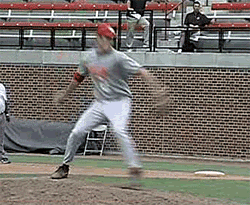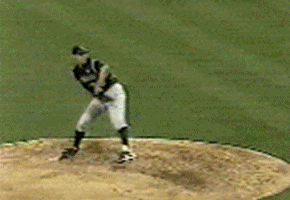quote:,“There are no whole truths; all truths are half-truths. It is trying to treat them as whole truths that plays the devil.” Whitehead
Fred,
Thanks for your thoughtful reply. As a coach working with players I couldn’t agree more that the KISS approach (Keep It Simple Stupid) works best for the majority of players. Simple cues are far more likely to “click” than lengthy detailed explanations.
It does not follow however that the act of throwing and hitting a baseball is something simply understood or explained as we should all know. There is indeed beauty in simplicity when it is genuine, but over simplification can be misleading at best, counterproductive and dangerous at worst.
Unfortunately when it comes to understanding drag lines simplicity all to often becomes simplistic.
For example…as recalled previously in this thread there was a period when many well thought of college pitching coaches (I have their books if you want them) thought any dragging of the foot was slowing you down. So they resorted to placing buckets or bricks in front of the rubber to get the back foot flying up in the air.
Number one pick Garret Cole would have been a star pupil back in that day….his triple digit velocity would be seen as proof of why you don’t want to drag the toe. Yet how many pitchers with perfectly sound toe dragging mechanics were ruined by this simplistic understanding of what drag lines (or lack of) mean?

Fast forward to today and we have several leading instructors who claim the foot must drag to achieve maximum velocity and the foot on the ground near release also helps with control. Ah again, Garret Cole’s velocity is pretty good and last I checked Cliff Lee has no drag line to speak of and his control isn’t suffering.
What to make of the leagues hardest throwing starter for three years prior to this past year Ubaldo Jimenez? Not only is there practically no drag line… there is hardly any gap between his back foot and the rubber upon release.

This would appear to contradict those who associate long powerful drag lines with velocity. Somewhere in the distance I can hear an old friend beating the rotational drum…
And now if I understand your presentation correctly you are saying that a back foot which immediately goes out to the throwing arm side indicates poor use of the hips and lower body. Yet that is exactly what is going on with Lincecum and Koufax, who in my opinion get much more out of their lower bodies than John Smoltz. Incidentally, in the case of Lincecum, his foot going to the right is not entirely explained by his dominant “ferris wheel” delivery.
Yes the back foot kicking over is a counter balancing reaction to the upper body and this hockey “slap shot” reaction can be seen in many pitchers…bending over from the waist in a lower release forces greater counter reaction. Think bowlers. However I don’t see this reaction as a key indicator which definitively determines whether a pitcher has made good use of his hips….again look at Koufax and Lincecum.
Finally, I’ve nothing but respect for your quest to more thoroughly understand what it takes to throw a baseball and you are undoubtedly one of the most knowledgeable coaches in the game today. What’s more, you are exceedingly generous with sharing your explorations for which we are all grateful. Very few coaches have the guts to be as open and helpful as you.
You revived this thread and I’m responding with my 2 cents. Looking forward to learning more from your response.
quote:“A clash of doctrines is not a disaster—it is an opportunity” Whitehead
Happy New Year and keep up the good work!
